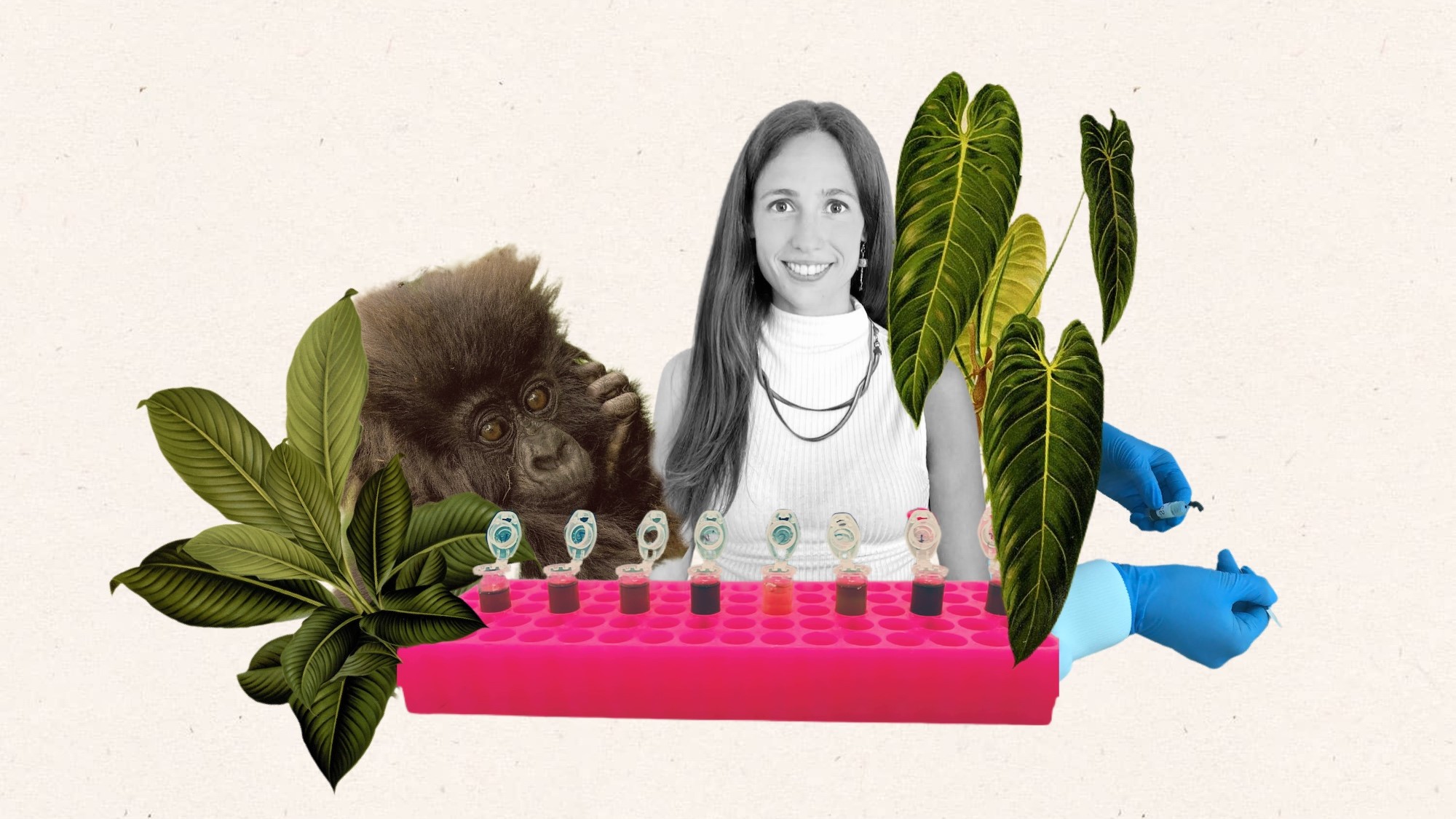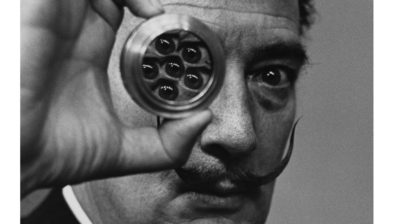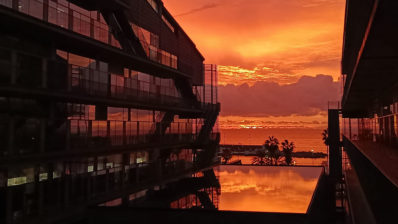Marina Álvarez (Cardedeu, 1993) is in the second year of her doctorate at the Institute of Evolutionary Biology (IBE: CSIC-UPF), in the Comparative Genomics group led by Tomàs Marquès-Bonet.
After studying Genetics at the UAB and due to his interest in genetic counseling, she came to the genetics laboratory of the Department of Experimental and Health Sciences, Pompeu Fabra University (DCEXS-UPF) to do a laboratory internships. In parallel, she was doing her final degree project creating teaching materials to explain genetics to patients for genetic counseling.
Later, Marina studied the master’s degree in Biomedical Research at UPF and when she finished it, she started in the Marquès-Bonet lab at the IBE as a laboratory technician. “They worked with big apes, not humans, but some of the lab techniques I had learned were just the ones they needed,” says Marina.
This is how she delved into her doctoral thesis on the genomics of conservation. “I study the genomes of endangered species – mainly gorillas- by analyzing non-invasive samples, such as feces or hair,” she says.
“I study the genomes of endangered species – mainly gorillas – by analyzing non-invasive samples, such as feces or hair.”
Marina Álvarez (IBE)
And how does this help in the gorillas conservation? Marina tells us that the aim of her doctoral project is to create a genomic map of gorillas that represents populations of the 4 existing subspecies, very similar to what one of her lab colleagues, Claudia Fonterè, did with chimpanzees. The idea is that if you take a sample of these monkeys, you can compare it to the genetic map and you can find out the origin of the animal. This could detect hot-spots of illegal trafficking of great apes and even try to return them, especially the young ones, right to their region and community.
Getting this genetic map done is no easy task. Although they use feces because they are easier to get and there is less bureaucracy (“nobody wants poop for anything!”, Marina smiles), they are still hard to get; they are just waiting for some samples to arrive this week that they have been waiting for a year. And once you have them, they may only contain 1% of endogenous DNA (that is, gorilla DNA); the rest will be from plants they have eaten, from bacteria, and so on. That’s why the technique the lab uses to ‘catch’ fecal gorilla DNA is so relevant. “We have molecules, like pieces of velcro, with the gorilla sequence, that can recognize the gorilla DNA in the feces. They are attached to a magnet that allows us to recover the DNA of the sample”, simplifies Marina in a graphic way.
Right now there are less than 100 gorillas sequenced – and many of them in captivity. The aim of Marina’s thesis is to have as detailed a map as possible of the 4 subspecies of gorillas. Aside from their IBE lab, a group at the Max Planck Institute in Germany worked on the chimpanzee project, and a group in Switzerland is doing the same with orangutans. “In fact, one of the students who is doing this in Switzerland spends a lot of time in our laboratory, because here we have this know-how not only on how to extract DNA from feces but also on how to analyze it. We could say that we are the world experts in poop of great apes!”, jokes Marina.
The young scientist recently won the first prize in the Rin4 ‘(Research in 4 minutes) competition at UPF with her talk “Salvem els nostres cosins evolutius” (“let’s save our evolutionary cousins”), where she explained her research in 4 minutes. “Over the years I have seen that what I like most is the dissemination and representation of difficult data in a simpler way. In fact, when I think about my future, I see myself working on something that brings science closer to society, such as scientific communication, or combining my passion for design with data visualization. I really like to think about what I say, how I say it and how to make it attractive.”
We take this opportunity to ask Marina a few more questions and get to know her better.
“I really like to think about what I say, how I say it and how to make it attractive.”
Is a scientist born, or made?
I think you are born a scientist.
What kind of student were you when you were little?
I was very curious and enjoyed learning about a lot of different things – I guess that’s the main reason I became a scientist! I especially enjoyed nature and science classes. Although I was also a very active girl and I really enjoyed sports.
If you could choose to travel in time, to the past or the future, where would you go?
It would travel to a future where there are no gender biases in science and society. I wish I could see this happening sooner rather than later!
Do you see these gender biases in your day to day life? Have you or someone you know ever suffered them?
In our group we will now be even more women than men, but at the level of group leaders in the department this is not at all the case. And even beyond the numbers, you can still see sexist attitudes at the level of ‘division of labor’, of collaborations, of accepting or not the comments or suggestions of a woman or a man, of pay differences…
You say that work-life balance is very important to you…
Yes, it is essential. Because the work is very passionate, and very interesting, but it is also intense, there is a lot of pressure, and it is important to have other passions, to find that balance – although it is not always easy! I like climbing and going to the mountains, and on weekends I always try to escape the city.
How would your peers describe you?
I hope that as a happy person; I like to see the good side of things whenever possible. I also like to help them whenever they need help in the lab and with the design of their presentations.
What do you like most about science?
That there is always something new to explore!
Which assumption about scientists is true?
That we are never completely satisfied with our work, as there is always room for improvement and new knowledge.
And which one is false?
That because we are passionate about our work, we should not ask for better working conditions and pay.
What’s the best advice you’ve ever been given?
Don’t compare yourself to others!
Tell us a saying about science.
“La paciència és la mare de la ciència.” (Patience is the mother of science.)
Which scientist do you admire the most?
I feel great admiration for my co-workers, especially for women.
What would you do if you didn’t do research?
I think graphic design would have been another option. I actually like to combine the two whenever I get the chance.
What is your favorite book?
Purple Hibiscus, by Chimamanda Nogozi Adichie.
Song?
Trepitja fort, by Lax’n’Busto
Artist?
She is not an artist, but an athlete: Nina Williams
Movie?
Her
Finally, a recommendation of who to follow on social media
@SavingGorillas and @mae_minaa
Thank you Marina and good luck with your thesis!







